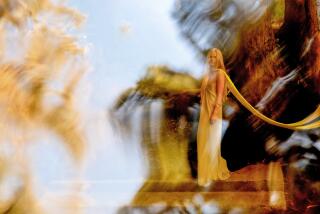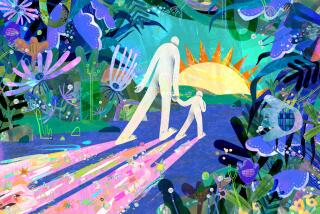The Key to Creativity : FREE PLAY; Improvisation in Life and Art <i> By Stephen Nachmanovitch (Tarcher: $16.95; 197 pp.; 0-87477-578-7) </i>
- Share via
The search for the muse within us continues. Since the time of Euripides in the 5th Century BC, poets, philosophers, scientists, writers and psychologists have been trying to explain creativity; where it is born; what forms it takes, and, most important, how it might be nourished.
If anything has come out of these idiosyncratic efforts, it is that the explanations have been almost as diverse as those offering them, from Vincent van Gogh anguishing over the chaos “imprisoned” within him to Stephen Spender contemplating “a dim cloud of an idea which I feel must be condensed into a shower of words.”
Also seeking to explain and plumb the creativity process in recent years have been gaggles of motivational gurus. They have tended to view innovation and invention as everything from a transcendental mystical experience to a sort of simplistic series of mental exercises.
No such inner paths, or “block- busting” formulas, or collection of challenging if contradictory explanations are offered in “Free Play.” For author Stephen Nachmanovitch, the key to creativity is, in a word, improvisation, the heart of which he defines as surrendering oneself to the “free play of consciousness as it draws, writes, paints and plays the raw material emerging from the unconscious.”
To be sure, Nachmanovitch is not writing of the need for the artist with a capital A to improvise, but of everyone and anyone “who wants to contact and strengthen their own creative power,” be they musicians or mechanics.
Nachmanovitch explores the “birth, blockage, and breakthrough” of improvisation in a fervid prose sprinkled liberally with the illuminations of Zen, classic epigrams, patent homilies and personal anecdotes. He values the mistakes we should learn from, the blockages we have to overcome, the patience we need to exercise and the defeats we must endure, among other obstacles in the creative process.
A musician, computer artist and poet with a doctorate in the history of consciousness from UC Santa Cruz, Nachmanovitch is particularly critical of the “proliferation of disciplines and -ologies, most of which function primarily to protect their own professional turf . . . at the expense of the richness and flexibility that should be inherent in a living body of knowledge.” He extols the innocence, honesty, curiosity and sense of adventure of the child and correctly worries that schools, instead of nurturing creativity, tend to destroy it, as does popular culture.
Nachmanovitch does recognize the possibility that because of the lack of discipline inherent in the concept of improvisation, the resulting creations may be of lesser quality. But he does not clearly address the issue much beyond debating what constitutes quality, beauty and truth, and declaring that “free play must be tempered with judgment, and judgment tempered with freedom to play.”
The book has a surfeit of such one-liners, as well as select words italicized for emphasis. The writing also tends to the self-conscious, the studied; though perhaps better that than free play. While the ideas contained in the book might be a product of improvisation, the organization and execution most certainly are not.
But in the final analysis, there are no quick fixes to the creative process, be it improvisation, meditation or whatever. Creativity remains as it was at the time of Euripides: a perplexing, distinguishing, subjective process, one that is more easily displayed than discussed.
More to Read
The biggest entertainment stories
Get our big stories about Hollywood, film, television, music, arts, culture and more right in your inbox as soon as they publish.
You may occasionally receive promotional content from the Los Angeles Times.










